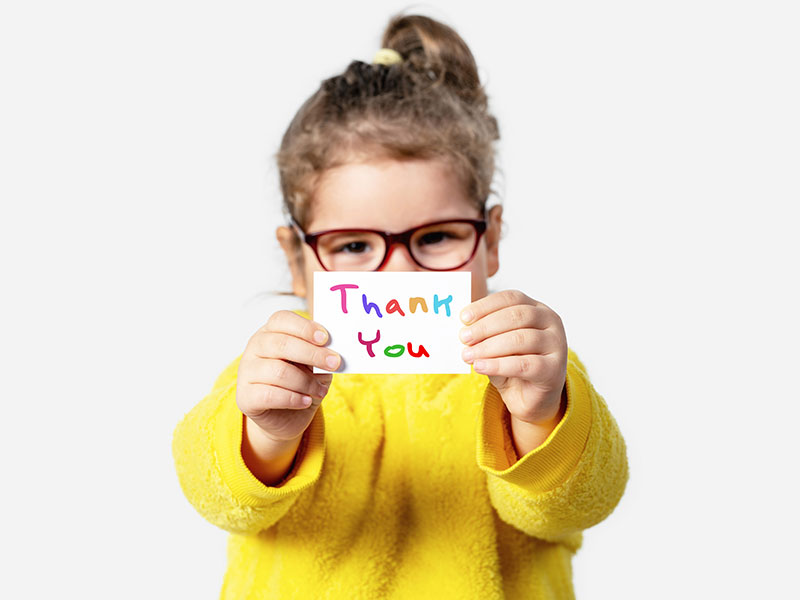What is gratitude in young children?
Gratitude is defined as feeling and expressing thankfulness. It involves appreciating things we often take for granted (family, friends, food, a home). Gratitude can be beneficial to your child’s physical and mental health in ways such as increased happiness, improved sleep, less stress, increased self-esteem and more. Read on to learn more about age-appropriate expectations and how to teach gratitude as a parent.
Gratitude throughout childhood
Gratitude does not come to children naturally. It takes time and a lot of learning. As your child gets older he or she will begin to express gratitude in many ways.
- Age 2 and under. Will begin to learn concepts of gratitude starting at 18 months of age. By age two, your child will begin saying “thank you” to others. Your child will not be able to express appreciation but is aware adults will do things to make him or her happy.
- Age 3-5. Begins to learn when and how to say “thank you.” Will also begin to identify and name things that make him or her feel grateful, such as a favorite toy or pet. Enjoys writing thank you cards with assistance from an adult.
- Age 6-8. Recognizes how others help, expressing thanks for this help, and talking about things that make him or her feel grateful. Your child may begin to express gratitude independently without prompting.
Teaching gratitude
Use the following suggestions to help teach your child about gratitude.
- Role model. The best way to teach your child to be grateful, is to be grateful yourself. Your child learns by watching and listening to you. Start using “please” and “thank you” comments frequently.
- Help your child to understand feelings. Helping your child understand feelings will help to build empathy and gratitude. Ask your child how he or she feels after doing something nice for someone. “How did it make you feel when you helped grandma with her chores? That was so thoughtful!”
- Volunteer and help others. Find opportunities for your child to help others. For example, collect a box of food or old toys to donate to a local shelter. Or offer to rake a neighbor’s lawn.
- Make a list. Sit down with your child to brainstorm things he or she is grateful for. Grab a pencil and piece of paper and write down all the ideas he or she comes up with.
- Read books. Books are a fun way to teach your child about gratitude. When done with the book, have your child borrow or lend it to a friend! Examples of books: “The Thankful Book” by Todd Parr or “Those Shoes” by Maribeth Boelts.
- Write thank you notes. Help your child write thank you notes for someone special. Include some fun artwork or pictures as well.
Gratitude does not develop overnight. With time, your child will slowly learn the art of gratitude with your help and support.
…
Posted In Children's, Parenting
